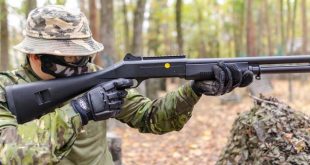Any musician knows how invaluable instruments are in monetary and sentimental value. One of the scariest things about moving is ensuring that your prized instruments arrive safely at your new home. Whether you’re relocating across town or across the country, properly packing and handling your instruments is crucial. This listicle will guide you through packing different types of musical instruments, making sure they stay in perfect condition during transport.

Percussion
The first step in packing any percussion instrument is to disassemble the kit into individual components. Remove the heads and rims and pack them separately in padded cases. Use a piece of cloth to cover each drum shell and ensure they are snugly packed in a box with ample packing peanuts or bubble wrap. Cymbals should be wrapped individually and placed in padded cymbal bags. Proper padding and sturdy boxes will prevent damage and save you from costly repairs.
Brass
Brass instruments, such as trumpets, trombones, and tubas, should be wiped down and disassembled before being packed away. If you do not have a specialty case for your brass instrument, you can take steps to protect it in a cardboard box. First, wrap the main body of the instrument in bubble wrap or cloth. Place it in a sturdy box and fill any empty spaces with packing peanuts or crumpled paper to prevent movement. Label the box as “fragile” to ensure careful handling during the move.
Wind
Woodwind instruments, including flutes, clarinets, and saxophones, need to be disassembled before packing. Place each piece in its designated compartment within the instrument’s case. If the original case isn’t available, wrap each part in bubble wrap and place them in a sturdy box. Use additional padding to prevent movement. For larger wind instruments, consider using custom-shaped foam inserts that provide extra protection.
String
String instruments, such as violins, cellos, and guitars, are particularly vulnerable to damage during a move. Loosen the strings slightly to relieve tension and prevent breakage. Wrap the instrument in a soft cloth and place it in its hard case. If the case is unavailable, use a sturdy box filled with padding materials. Pay special attention to the instrument’s neck and bridge, as these areas are prone to damage. Taking extra precautions helps keep your instrument in top shape.
Pianos
Moving a piano is an intimidating task that requires expertise and specialized equipment. Due to their size and weight, pianos can easily get damaged if not handled correctly. In fact, it may be best to hire piano moving services rather than attempt to move the large instrument yourself. Professional movers have the experience and tools necessary to move your piano safely, ensuring it arrives at your new home without a scratch. Trusting professionals with your piano ensures it stays in tune and in perfect condition.
Relocating your musical instruments doesn’t have to be stressful. By following these guidelines, you can ensure that your instruments are packed securely and arrive safely at your new home. For more moving tips to save you time and money, consider reaching out to professional moving services with experience handling musical instruments.
 World inside pictures Collect and share the best ideas that make our life easier
World inside pictures Collect and share the best ideas that make our life easier








